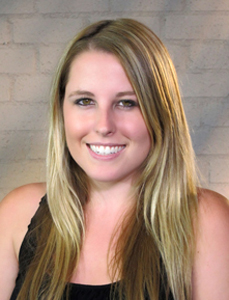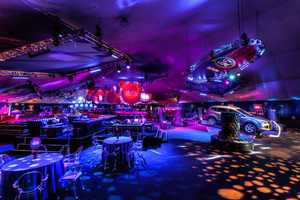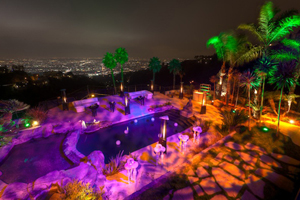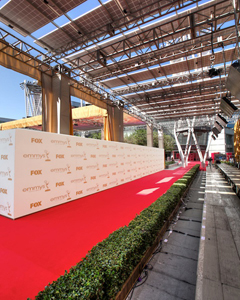LD Profile: Rachel Miller
Posted on March 1, 2013 Six questions with Rachel Miller, lighting designer at Kinetic Lighting company from Southern California.
Six questions with Rachel Miller, lighting designer at Kinetic Lighting company from Southern California.
1. How did you get into this field?
I started in musical theatre my sophomore year of high school, and I didn’t get into the show “The Fantasticks.” I begrudgingly accepted the role of light board operator, which immediately translated into designer. I fell in love with it then and there on my Lep 624 console. Soon after, my high school opened the new theatre and I had real lekos and a bigger console to play on. I decided to go to Emerson College in Boston for lighting and began working at Kinetic Lighting as a summer internship when I was home. Fell in love with the ephemeral nature of event lighting, and after working for a few other companies in Boston and Los Angeles, got my degree and started full time at Kinetic Lighting.
 2. What do you think is the next big thing in the industry?
2. What do you think is the next big thing in the industry?
I think the next big thing is more of an improvement than something new. Once LED fixtures are fully able to replace conventionals [dimming curve, output, etc.] then we have something great and energy-efficient on our hands.
3. Do you have a favorite fixture (and why)?
The CHAUVET COLORado 1-Tri Tour has served me well on every single show I have specified it on. It can function as an uplight, a narrow beam or a wash light when I put a Source Four PAR lens in the gel slot. It is multifunctional and I’d be happy to see them on any show.
 4. What has been your favorite design/project?
4. What has been your favorite design/project?
My favorite design was for the Drew Carey “Price is Right” wrap party in 2011. We worked with Inna at Poko Events and came up with a design to fit her Studio 54 theme. James Schipper and David Jacobi designed the intricate truss layout, which was all ground-supported circles broken into pieces to create a wave-like perimeter around the party. This gave me multiple structures to light off of, and since it was two stories tall with go-go dancer decks on top, I had tons of options. I researched Studio 54, called my dad to get the inside scoop from a New York attendee, and hit the drawing board. I used ColorBlaze fixtures vertically on the truss and had them do a section chase very similar to the cyc light chases at the club back in the day. I toned every piece of truss with COLORado 1-Tri Tour lights, giving me the ability to change the entire atmosphere with its saturated, punchy colors, and threw a mix of Mac 2000 and Mac 301 lights to do beams swooping across the party. It was a darker atmosphere, and the two-story truss and dancer platforms really alluded to what the club was like in the ‘60s.
 5. What was the biggest unforeseen obstacle that you have faced in one of your designs, and how did you overcome it?
5. What was the biggest unforeseen obstacle that you have faced in one of your designs, and how did you overcome it?
One of the bigger obstacles was walking into a ballroom with a full rig and light plot in hand, and being told the house manager gave us the wrong rig point drawing and all the points we thought we had were actually a different ballroom. We had a one-day install out of town and ended up having to ground support everything and make it work with what we could get our hands on. Lighting artwork in the center of that ballroom on flats was a challenge, but screwing in PAR 20s to the flats, using battery-powered photo lights and having just enough ambient light did the trick.
6. Complete this thought: A show without light is like…
…radio.
Photo credits: 2me Studios